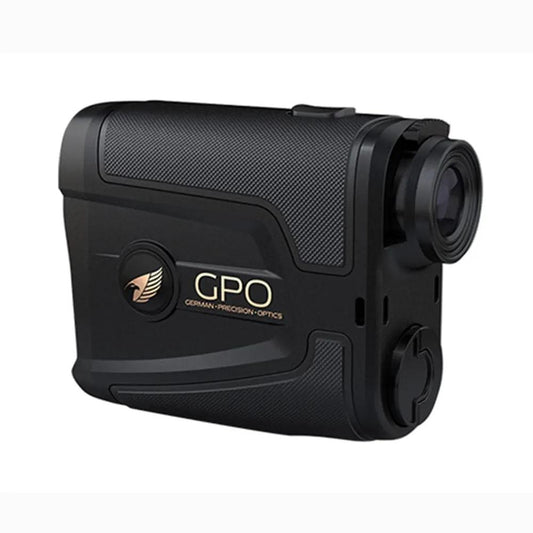

GPO Rangetracker 2000 Rangefinder 6x Black is engineered for precision and reliability, ideal for competitive shooting, hunting, and outdoor activities. With a magnification of 6x, it allows users to accurately measure distances up to 2000 yards, making it suitable for both tactical and recreational applications. The design includes advanced GPObright lens coatings that enhance light transmission, ensuring clarity even in low-light conditions. An intuitive OLED display adjusts automatically for optimal visibility, making it easy to read in various lighting situations.
Featuring True-range adjusted angle distance readings, this rangefinder provides precise measurements to improve accuracy during shooting. Its Hyper-scan technology delivers three readings per second, facilitating quick target acquisition. Built with durable materials, the GPO Rangetracker 2000 is compact and lightweight, making it an excellent choice for hunters and outdoor enthusiasts seeking dependable performance in rugged environments.
Features:
- ENHANCED CLARITY for accurate target identification even in low light conditions.
- EXTENDED RANGE of up to 2000 yards, perfect for long-range rifle hunting.
- FAST HYPER-SCAN feature delivering three readings per second for quick target acquisition.
- TRUE-RANGE ADJUSTED angle distance readings give precise measurements, enhancing shot accuracy.
- OLED DISPLAY with auto brightness ensures visibility in any lighting condition.
- COMPACT DESIGN makes it easy to carry during outdoor competitions and hunting trips.
- USER-FRIENDLY INTERFACE with intuitive controls for seamless operation.
- DURABLE CONSTRUCTION designed to withstand rugged outdoor environments.
Technical Specifications Table
| Specification | Details |
|---|---|
| Magnification | 6x |
| Range | 6 to 2000 yards |
| Weight | 300 grams |
| Dimensions | 4.5 x 2.5 x 1.5 inches |
| Material | High-quality plastic |
What’s in the Box?
- GPO Rangetracker 2000 Rangefinder 6x Black
- Lens covers
- Padded carrying case
- Neck strap
- User manual
Customer Reviews
“The clarity is unmatched! I can easily spot targets even at dusk.” - Jane D.
“The Hyper-scan feature is a game changer for quick shots. Highly recommend!” - Tom S.
“Lightweight and portable, perfect for my hunting trips!” - Mike A.
FAQ
How accurate is the GPO Rangetracker 2000? The rangefinder provides true-angle distance readings, ensuring accurate measurements even when your target is at an angle, making it reliable for both hunting and tactical shooting.
Can I use it in low light? Yes! The GPO Rangetracker 2000 features GPObright lens coatings and an OLED display that adjusts brightness automatically, allowing for clear visibility even in challenging lighting conditions.
How does it compare to other rangefinders? Compared to other models, the GPO Rangetracker 2000 offers superior range, faster scanning capabilities, and enhanced clarity, making it an ideal choice for serious shooters.
Similar Models
Looking for the perfect binoculars? Discover our extensive GPO lineup, including models like GPO Passion 10x42 for superior brightness and GPO Passion ED 8x32 for portability. Explore our full collection for exceptional optics tailored to your adventures.
You May Also Like
Here’s some of our most similar products people are buying. Click to discover trending style.






